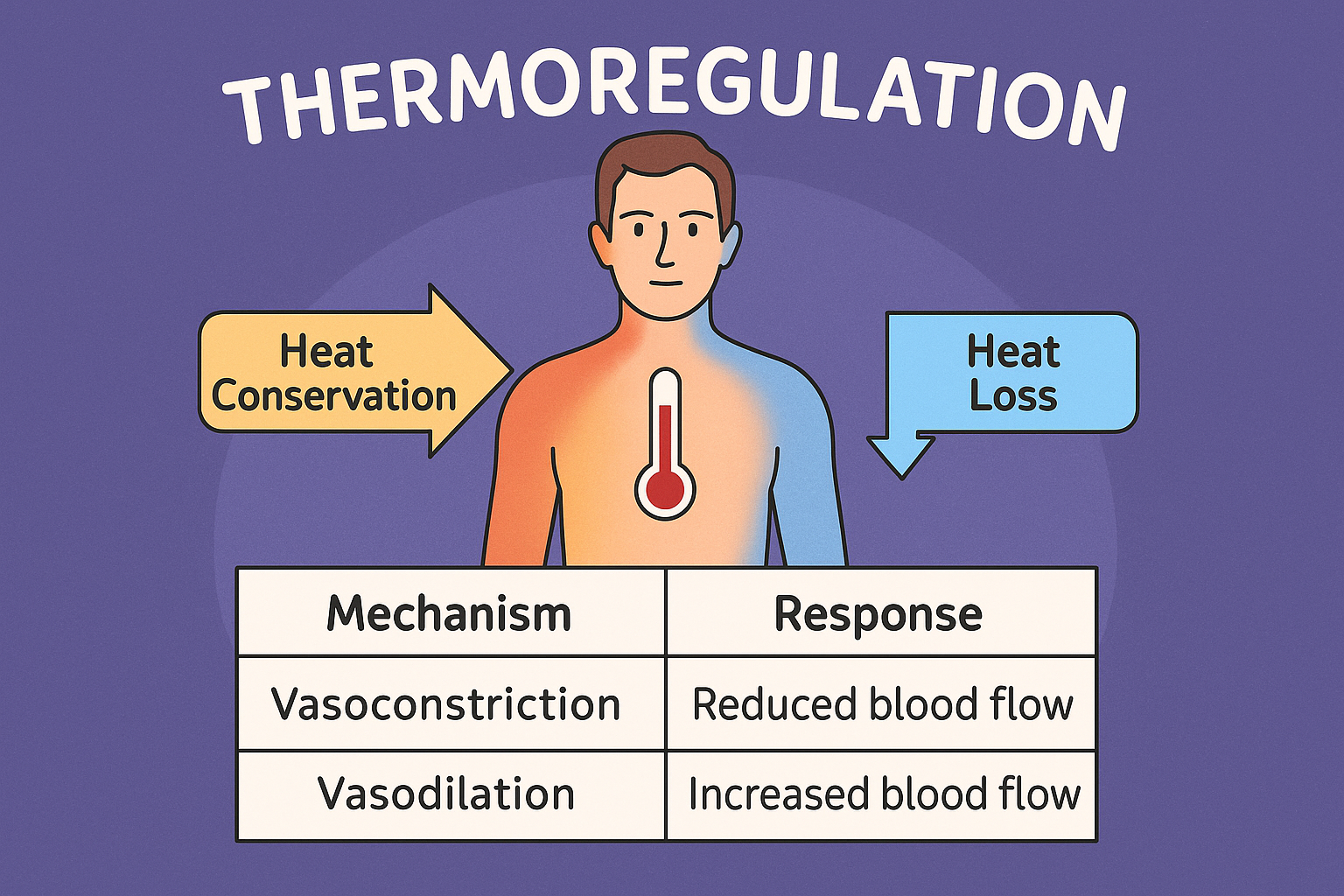🌡️ Thermoregulation – Mechanisms, Feedback, and Heat Transfer
Temperature regulation is a classic DAT topic because it integrates concepts from nervous system signaling, homeostasis, metabolism, and environmental physiology. Understanding how the body maintains a stable internal environment is essential for success on exam day.
Today’s blog breaks down:
Heat transfer mechanisms
Negative vs positive feedback
Human examples of thermoregulation
DAT-style application questions
🔥 Heat Transfer Types on the DAT
| Mechanism | Description | Example |
|---|---|---|
| Conduction | Direct contact heat transfer | Sitting on a cold bench |
| Convection | Heat transfer via air or water flow | Wind cooling skin |
| Radiation | Heat emission as infrared energy | Body heat radiating out |
| Evaporation | Heat loss through liquid vaporization | Sweating |
🧠 Evaporation = most effective way to cool body in hot environment.
🔁 Feedback Loops and Thermoregulation
| Feedback Type | Description | Example |
|---|---|---|
| Negative | Reverses the stimulus | Sweating to cool the body |
| Positive | Amplifies the stimulus | Fever, oxytocin in childbirth |
✅ Most thermoregulation mechanisms involve negative feedback.
❄️ Human Thermoregulation Responses
| Condition | Body Response |
|---|---|
| Too Hot | Sweating, vasodilation |
| Too Cold | Shivering, vasoconstriction |
🧠 Vasodilation = widen vessels → lose heat
🧠 Vasoconstriction = narrow vessels → conserve heat
📈 DAT-Style Practice Question
Q: Which of the following is a method of heat loss involving liquid turning to vapor?
A: Evaporation
✅ Expect DAT questions linking physiology terms with environmental responses.
🎯 DAT Strategy Tips
✅ Learn and differentiate all 4 heat transfer methods
✅ Know examples of negative vs positive feedback
✅ Understand which parts of the nervous system control heat response
✅ Practice interpreting feedback and thermoregulation scenarios
More diagrams available at kingofthecurve.org/studyscience
🚀 Call-to-Action
Want to stay cool under DAT pressure?
Download the KOTC App and access:
Interactive feedback loop flashcards
Heat transfer simulations
Thermoregulation drills + Curve Coins
Visual memory builders for core physiology
🌡️ Stay in balance—prep smarter with KOTC.
Frequently Asked Questions (FAQs)
-
Aim for 4-6 focused hours, ensuring you incorporate breaks to avoid burnout.
-
Practice mindfulness techniques, take practice exams under realistic conditions, and maintain a balanced lifestyle.
-
Set short-term goals, seek support from mentors, and reward yourself for small achievements.
-
Regular exercise improves focus, reduces stress, and enhances overall mental clarity.
-
KOTC offers personalized learning tools, gamification features, and adaptive question banks to help students stay on track without burnout.


